Top Innovative Housing Projects Across the Globe
Architecture professionals, alongside developers, continuously adapt housing models to fulfill requirements for fast urban growth and climate requirements and lower housing costs.
New housing developments worldwide incorporate modern technological innovations together with sustainable building materials and creative architectural design approaches for solving pressing urban needs.
Several groundbreaking residential developments throughout the world have established innovative housing models which redefine contemporary living standards.
1. Bosco Verticale – Milan, Italy.
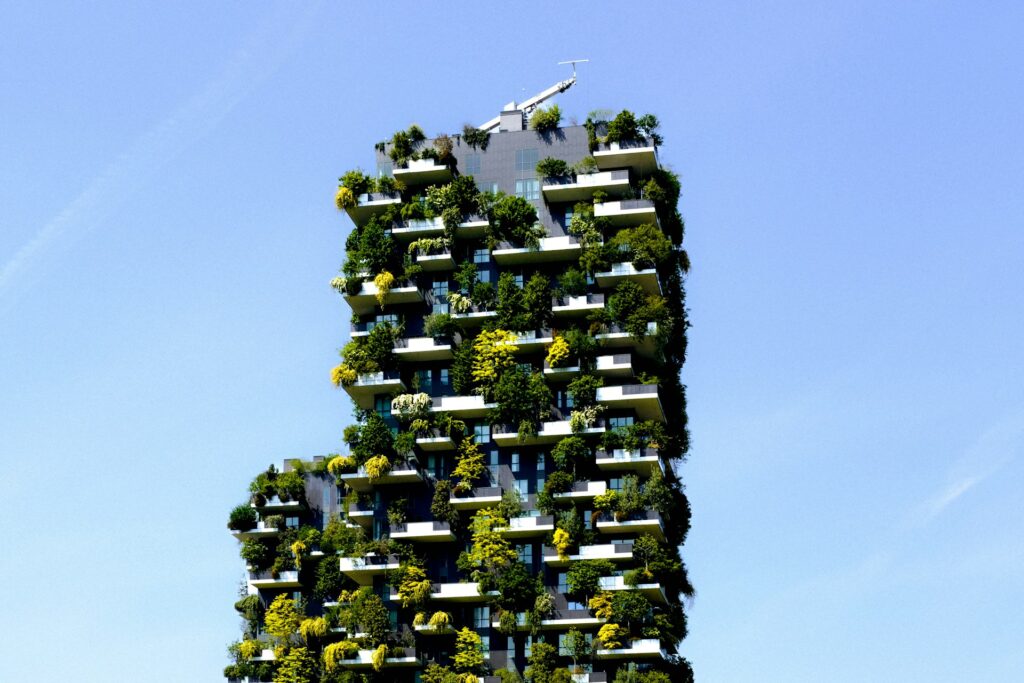
The apartment complex called Bosco Verticale stands in Milan as the flagship residential site that commits to combine vegetation elements into city residence areas.
Through Stefano Boeri Architetti’s design two residential towers achieve over 20,000 planted facade components consisting of forest vegetation to include various trees and bushes and floral decorations.
Through its green architectural design the project serves three essential benefits: reducing thermal islands in cities while enhancing environment quality along with creating habitats for city dwellers among vegetation.
By utilizing greenery the building operates as insulation thus helping to decrease heating and cooling utility costs. Bosco Verticale demonstrates the potential of residential projects to connect high-density urban development with natural elements providing urban dwellers access to a special merging of city lifestyle and natural serenity.
2. The Eden Project – Singapore
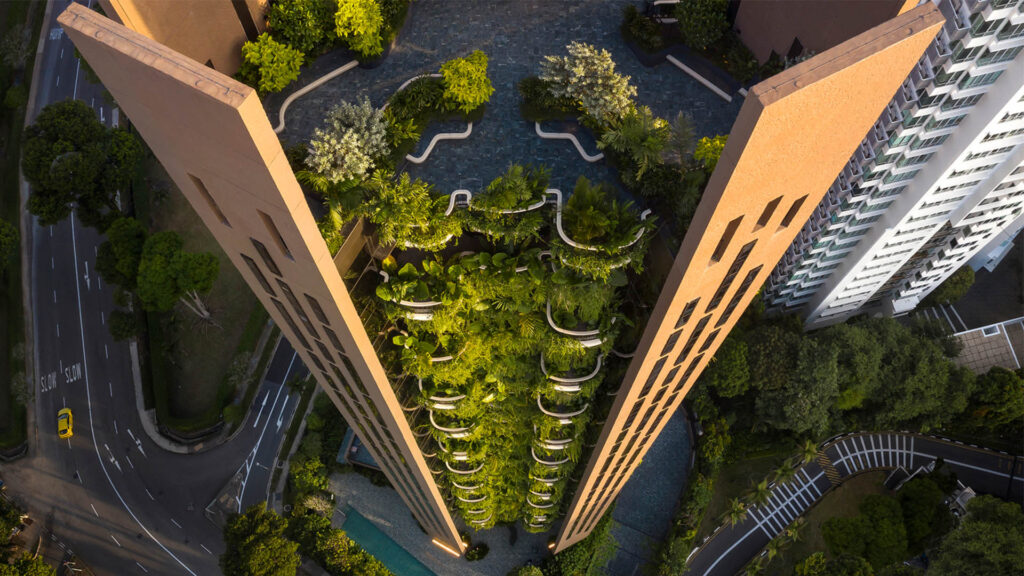
The Singapore branch of Eden Project designed by Heather wick Studio presents sustainable high-rise living through its biophilic architectural approach.
The building structure incorporates big ventilated terraces filled with green plants which create an illusion that dissolves the separation between interior and exterior living spaces.
During construction the project built its exterior wall from concrete which integrated recycled materials while reducing its environmental footprint.
Eden demonstrates architectural solutions for hot tropical areas by implementing passive ventilation systems together with green planting to achieve temperature comfort not requiring intensive air conditioning.
Edition represents Singapore’s dedication to create “A City in a Garden” as it establishes environmental criteria for sustainable city living.
3. MVRDV’s Valley – Amsterdam, Netherlands

The mixed-use project Valley designed by MVRDV sits in Amsterdam’s Zuidas commercial area where it embraces residential along with commercial developments coupled with cultural elements.
The terraced gardens forming the distinctive feature of this structure express a mountainous look through their progressive layers of green vegetation.
The sustainable architecture of Valley includes energy-extensive building systems alongside biodiverse green roofs.
The community-centered approach of the project creates shared public areas between residential users and visitors including gardens and urban squares.
The integration of natural elements within an urban metropolis at Valley transforms the concept of linking residential density to ecological harmony.
4. Earth ship Biotecture – Taos, New Mexico, USA
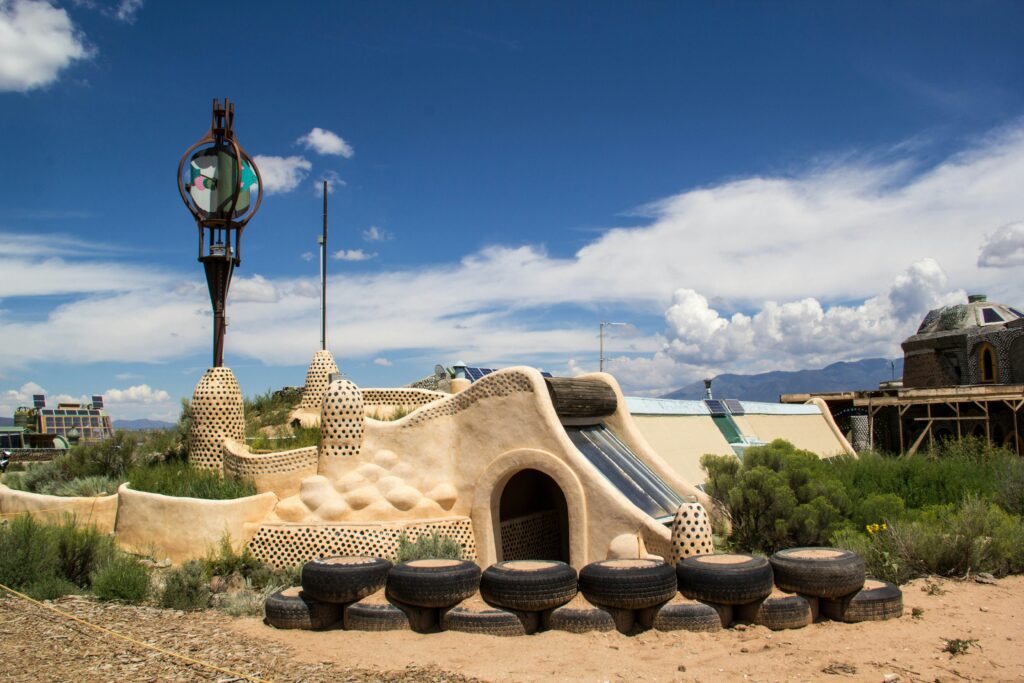
The self-sufficient off-grid residences known as ‘Earth ship Biotecture’ operate in Taos New Mexico with total connection to the surrounding environment.
Earth ship Biotecture produces homes through the combination of recycled materials including vehicle tires and recycled plastic bottles and water bottles while employing sustainable electricity from solar and wind generation systems.
The distinction of Earth ships lies in their total self-sufficiency from grid-connected power.
The passive solar design system enables these homes to maintain stable temperatures while the homes collect rainwater for daily requirements and process wastewater with natural filtration systems on site.
These sustainable dwelling spaces demonstrate the possibility of self-sufficient living through green power systems which protect the environment even while delivering contemporary amenities.
5. Makoko Floating School – Lagos, Nigeria

Makoko Floating School addresses environmental concerns which affect waterfront dwellers in Lagos, Nigeria through its pioneering sustainable framework.
The institution functioned as a model project for building architecture which helps people survive in flood areas while utilizing sustainable design principles and flexible structures to tackle climate change issues.
The school’s modular framework enables effortless duplication as it presents a guideline for stable residential and community construction throughout vulnerable geographic regions globally.
Although the original structure received decommissioning as its fate the underlying idea from which it derived continues to motivate builders worldwide who construct parallel designs.
6. Habitat 67 – Montreal, Canada
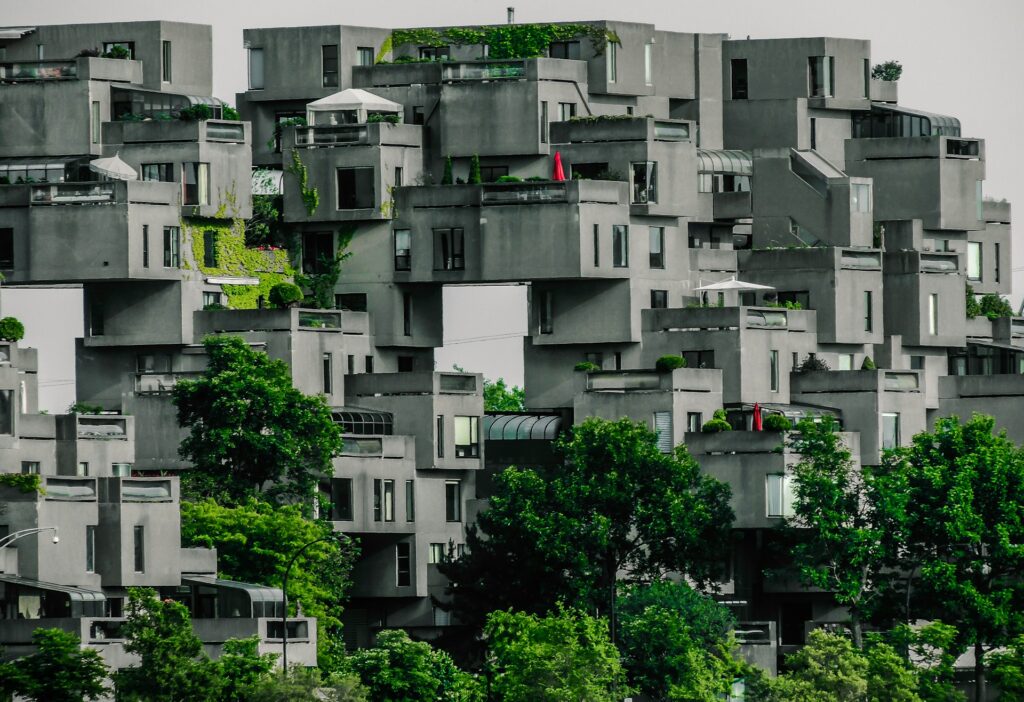
The innovative multifamily residential complex Habitat 67 which Moshe Safdie designed functions as an iconic structure that transforms how urban people live by employing modular construction.
Located in Montreal the architectural masterpiece features 354 prefabricated concrete units engineered to stack into a complimentary interlocking pattern.
Residents of this project can enjoy private terrace spaces and collectively access common green areas in addition to their privacy needs.
World War II influenced the planning of Habitat 67 as an answer for housing shortages within dense residential areas while retaining suburban community features.
This pioneering residential structure continues to demonstrate groundbreaking residential design principles since its initial completion many years ago.
7. Copen Hill – Copenhagen, Denmark
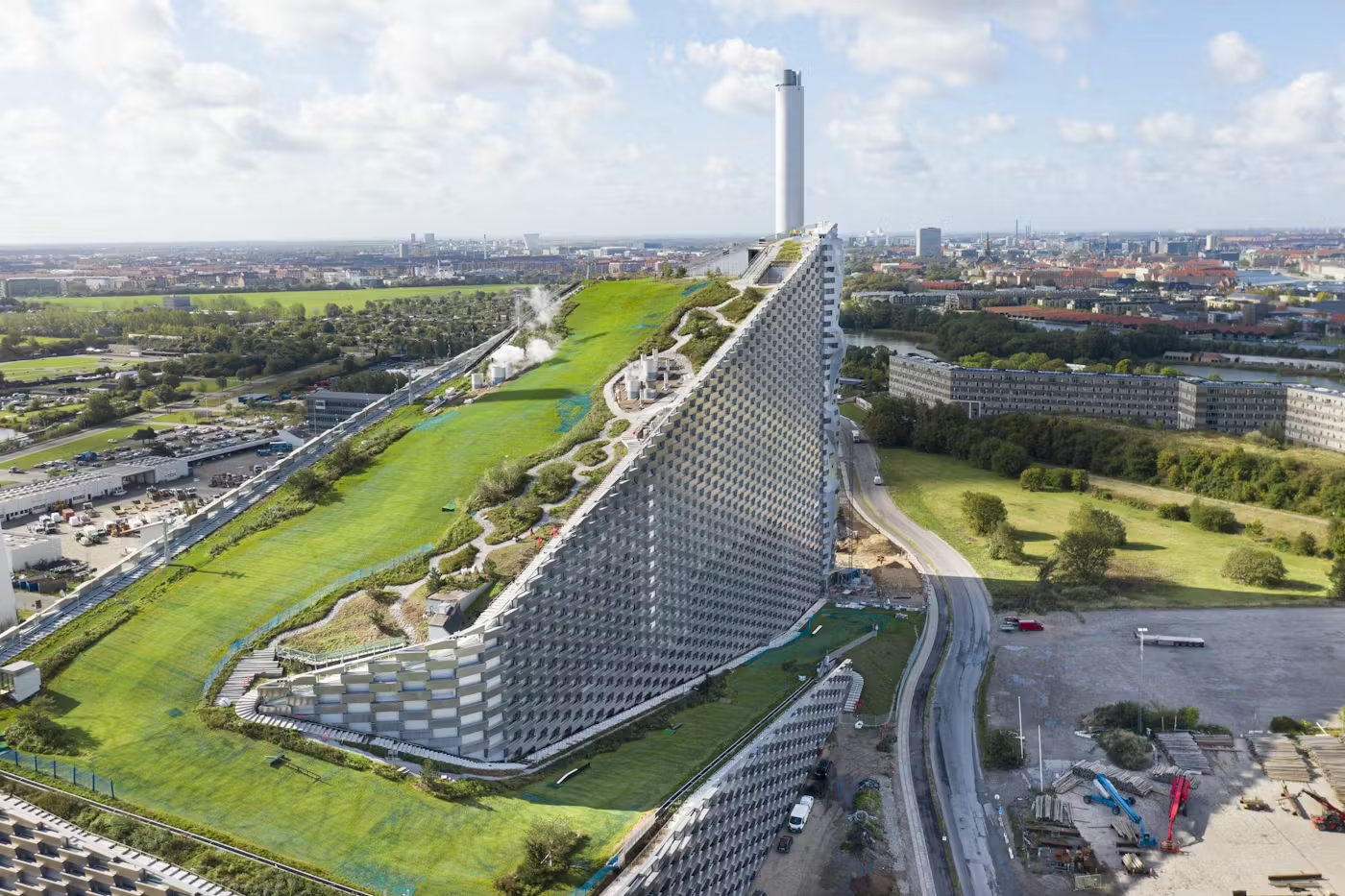
The compound Copen Hill serving under its alternate name Amager Bakke demonstrates a revolutionary approach to waste management by unifying power generation from waste with residential development and leisure amenities.
BIG’s architectural masterpiece merges diverse amenities through its rooftop ski slope while creating hiking paths and climbing features which unite local residents with city dwellers.
The sustainability of urban areas becomes evident at Copen Hill where the integration of residential development with environmental projects fulfills community needs while advancing sustainable urban design principles.
The facility demonstrates how industrial plants can serve as urban environments while supporting green residence activities through its community-focused design.
8. One Central Park – Sydney, Australia
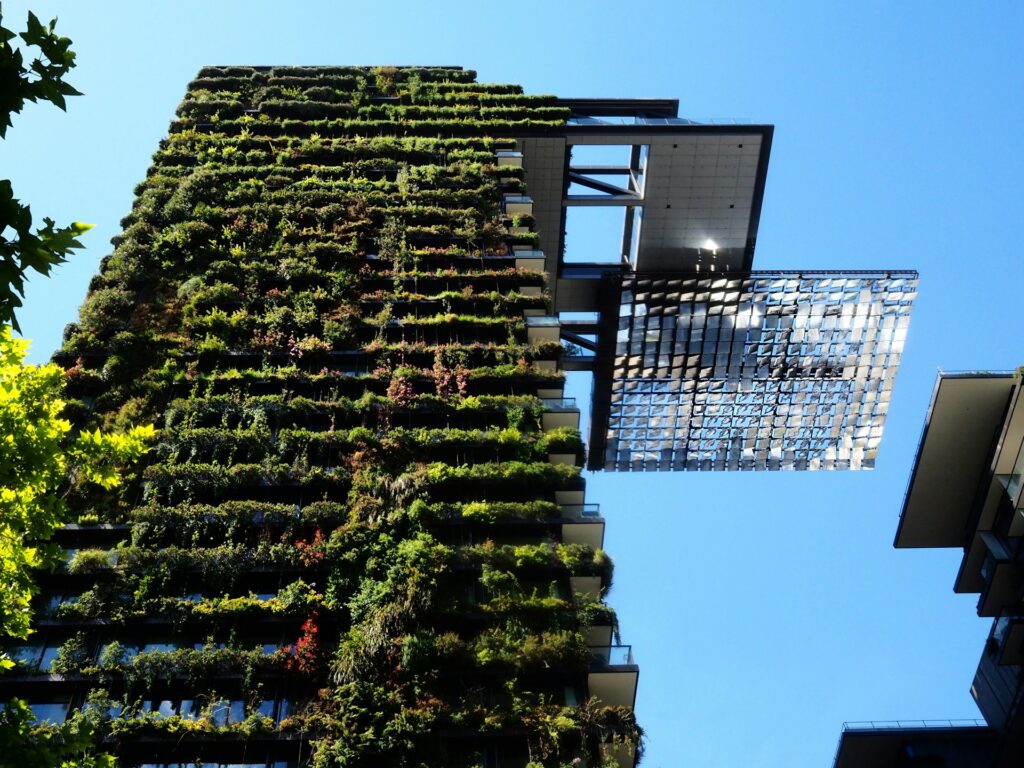
Sydney’s One Central Park demonstrates how a green design approach can revitalize urban residential buildings.
The residential development combines the skills of architect Jean Nouvel and botanist Patrick Blanc by featuring vertical gardens that cascade across the entire building front.
The heliostat system channels sunlight through its array of mirrors to deliver illumination in dark areas thus providing improved natural light to the entire complex.
The development serves as a benchmark for sustainable high-rise living because it combines renewable systems with water recycling features and lighting technology.
This housing project showcases the possibility of constructing residential developments that combine sustainable design aesthetics with luxurious finishes thus providing an example for future urban residential buildings.
Conclusion
Modern residential design shows how architects can create efficient sustainable housing through creative alignment with building requirements.
These architectural designs which include vertical forests and floating schools work to solve worldwide emergencies like climate change and urbanization and the lack of housing.
The innovative housing projects demonstrate to developers and architects that improved living spaces emerge when they advance housing standards beyond their limits.
Also read: Megacities: The Rise and Challenges of Urban Growth

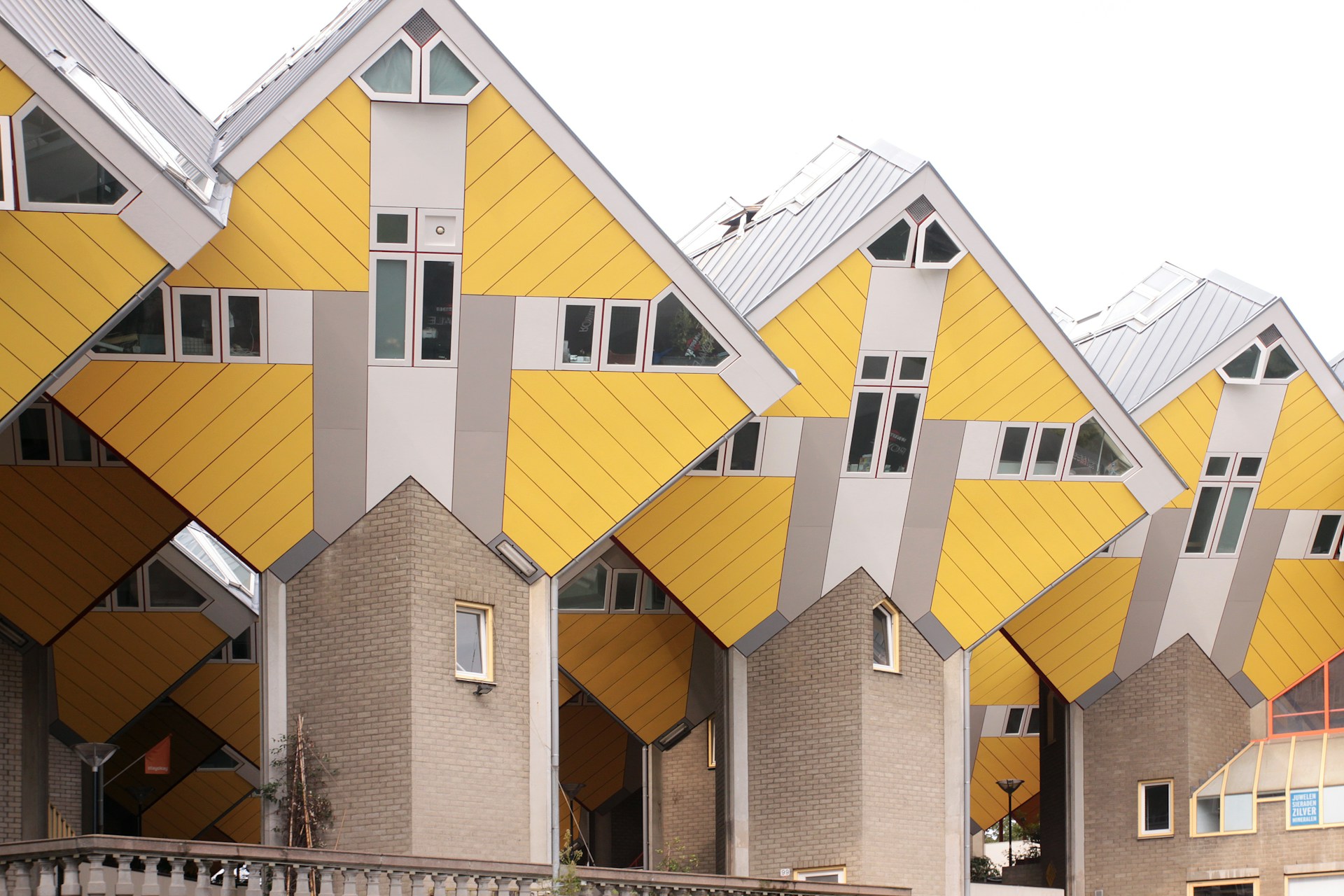
Hi my family member I want to say that this post is awesome nice written and come with approximately all significant infos I would like to peer extra posts like this
We truly appreciate your kind words and support.